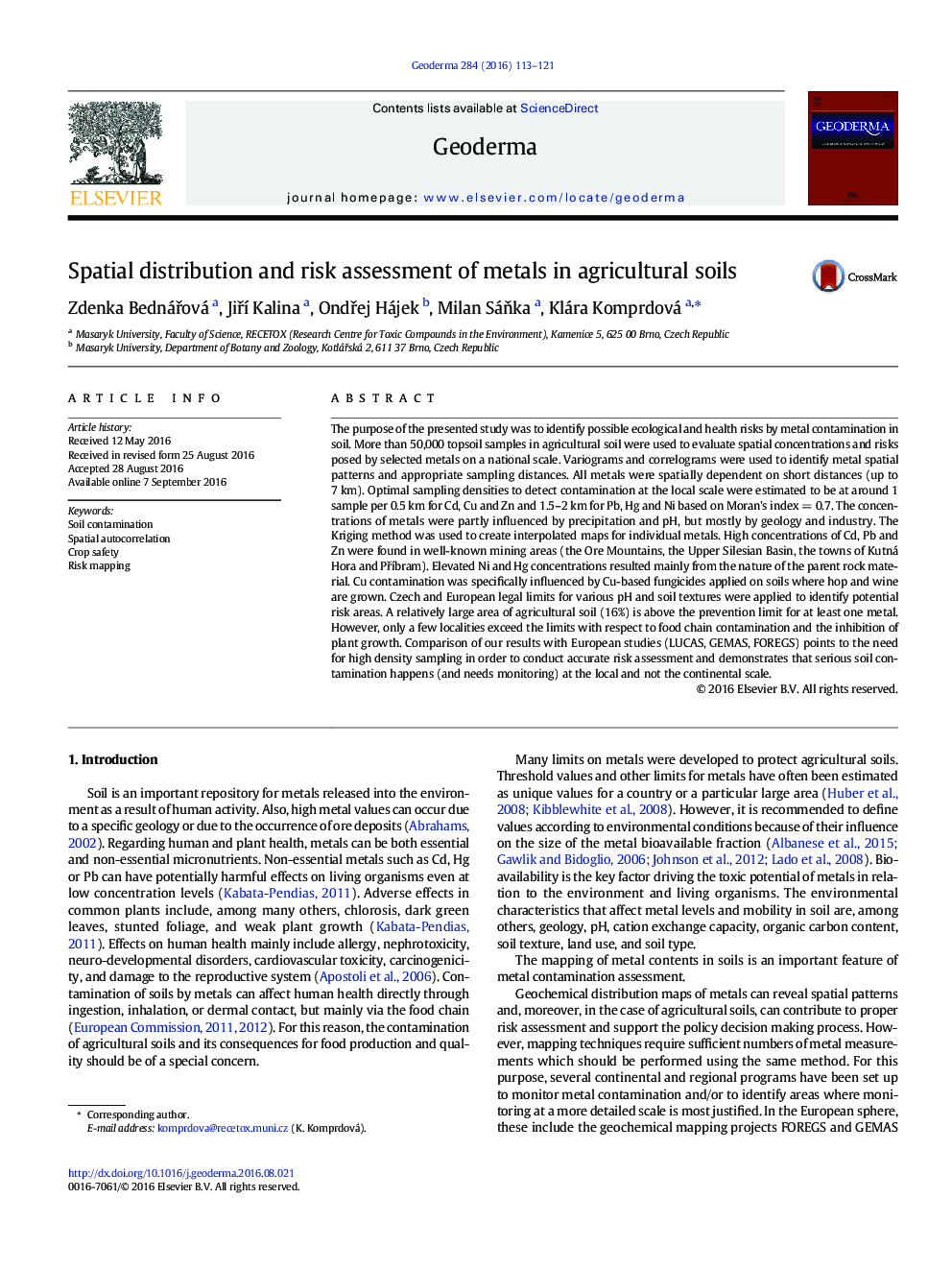| کد مقاله | کد نشریه | سال انتشار | مقاله انگلیسی | نسخه تمام متن |
|---|---|---|---|---|
| 6408286 | 1629433 | 2016 | 9 صفحه PDF | دانلود رایگان |
- The variograms show a local nature of a serious soil contamination in Czechia.
- The concentration pattern disappears at less than 5Â km from source.
- Mean levels of metals are comparable with European mapping projects.
- High density sampling is needed to conduct accurate risk assessment.
- Observed metal concentrations in the agricultural soils are in general quite low.
The purpose of the presented study was to identify possible ecological and health risks by metal contamination in soil. More than 50,000 topsoil samples in agricultural soil were used to evaluate spatial concentrations and risks posed by selected metals on a national scale. Variograms and correlograms were used to identify metal spatial patterns and appropriate sampling distances. All metals were spatially dependent on short distances (up to 7 km). Optimal sampling densities to detect contamination at the local scale were estimated to be at around 1 sample per 0.5 km for Cd, Cu and Zn and 1.5-2 km for Pb, Hg and Ni based on Moran's index = 0.7. The concentrations of metals were partly influenced by precipitation and pH, but mostly by geology and industry. The Kriging method was used to create interpolated maps for individual metals. High concentrations of Cd, Pb and Zn were found in well-known mining areas (the Ore Mountains, the Upper Silesian Basin, the towns of Kutná Hora and PÅÃbram). Elevated Ni and Hg concentrations resulted mainly from the nature of the parent rock material. Cu contamination was specifically influenced by Cu-based fungicides applied on soils where hop and wine are grown. Czech and European legal limits for various pH and soil textures were applied to identify potential risk areas. A relatively large area of agricultural soil (16%) is above the prevention limit for at least one metal. However, only a few localities exceed the limits with respect to food chain contamination and the inhibition of plant growth. Comparison of our results with European studies (LUCAS, GEMAS, FOREGS) points to the need for high density sampling in order to conduct accurate risk assessment and demonstrates that serious soil contamination happens (and needs monitoring) at the local and not the continental scale.
151
Journal: Geoderma - Volume 284, 15 December 2016, Pages 113-121
